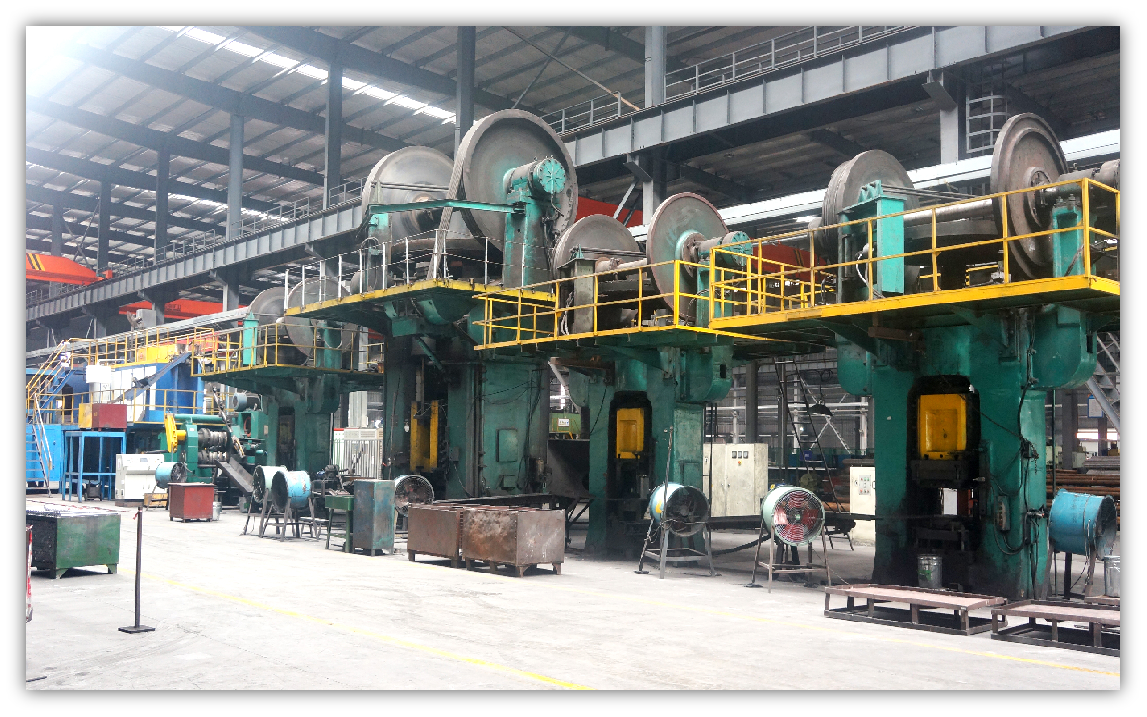Control of temperature when forging irregular parts
2022-12-06
Control of temperature when forging irregular parts
Temperature is the basis for controlling the process of the heating furnace. The temperature of the heating furnace includes the temperature of the furnace wall and the temperature of the furnace. The temperature of the furnace wall and the temperature of the furnace are not the same. It can be seen from the simulation of temperature field that the high temperature heating is dominated by radiation heat transfer. The temperature of furnace wall is the main parameter to control the heating of forged irregular parts. Low temperature heating is dominated by convection heat transfer and furnace temperature is the main parameter. Therefore, the thermocouple indicates what temperature will affect the heating quality of the forging.
The measured results of some forging heating temperatures show that the surface temperature of forging parts is still 40 ~ 60℃ lower than the furnace temperature for a long time, and some can even reach 200℃. Obviously, this is due to improper thermocouple installation, indicating the temperature is close to the furnace temperature. The thermocouple inserted into the furnace is affected by both the furnace wall and the temperature of the furnace, the depth inserted into the furnace is greatly affected by the furnace gas, and vice versa, is greatly affected by the furnace wall. Therefore, the depth of the thermocouple inserted into the furnace should be appropriate to the required heating temperature. Otherwise, for high temperature heating, according to the furnace temperature control, forging special-shaped parts can not reach the required temperature; For low temperature heating, according to the furnace wall temperature control, the temperature of forging parts will be higher than the process requirements. For a variety of heating temperature range of the heating furnace, such as the forging heat treatment furnace, the normal heating temperature is about 800 ~ 1050℃, the supercooling insulation temperature is about 200 ~ 400℃, annealing (tempering) temperature is 600 ~ 680℃, obviously can not use a depth of insertion thermocouple to reflect the temperature correctly. If the insertion depth is suitable for thermocouples heated at high temperatures, the possible deviation should be adequately estimated and corrected for use at low temperatures. It is also a practical solution to measure the temperature of the working surface of forged special parts which require strict cutting temperature.

Temperature is the basis for controlling the process of the heating furnace. The temperature of the heating furnace includes the temperature of the furnace wall and the temperature of the furnace. The temperature of the furnace wall and the temperature of the furnace are not the same. It can be seen from the simulation of temperature field that the high temperature heating is dominated by radiation heat transfer. The temperature of furnace wall is the main parameter to control the heating of forged irregular parts. Low temperature heating is dominated by convection heat transfer and furnace temperature is the main parameter. Therefore, the thermocouple indicates what temperature will affect the heating quality of the forging.
The measured results of some forging heating temperatures show that the surface temperature of forging parts is still 40 ~ 60℃ lower than the furnace temperature for a long time, and some can even reach 200℃. Obviously, this is due to improper thermocouple installation, indicating the temperature is close to the furnace temperature. The thermocouple inserted into the furnace is affected by both the furnace wall and the temperature of the furnace, the depth inserted into the furnace is greatly affected by the furnace gas, and vice versa, is greatly affected by the furnace wall. Therefore, the depth of the thermocouple inserted into the furnace should be appropriate to the required heating temperature. Otherwise, for high temperature heating, according to the furnace temperature control, forging special-shaped parts can not reach the required temperature; For low temperature heating, according to the furnace wall temperature control, the temperature of forging parts will be higher than the process requirements. For a variety of heating temperature range of the heating furnace, such as the forging heat treatment furnace, the normal heating temperature is about 800 ~ 1050℃, the supercooling insulation temperature is about 200 ~ 400℃, annealing (tempering) temperature is 600 ~ 680℃, obviously can not use a depth of insertion thermocouple to reflect the temperature correctly. If the insertion depth is suitable for thermocouples heated at high temperatures, the possible deviation should be adequately estimated and corrected for use at low temperatures. It is also a practical solution to measure the temperature of the working surface of forged special parts which require strict cutting temperature.

X
We use cookies to offer you a better browsing experience, analyze site traffic and personalize content. By using this site, you agree to our use of cookies.
Privacy Policy



